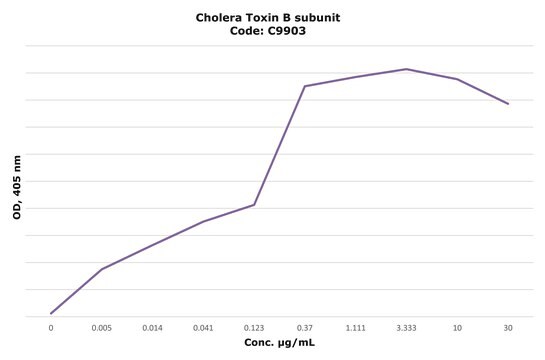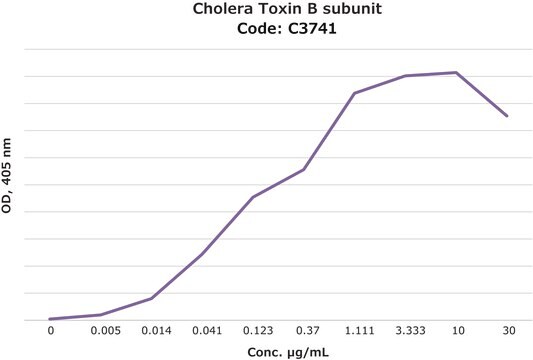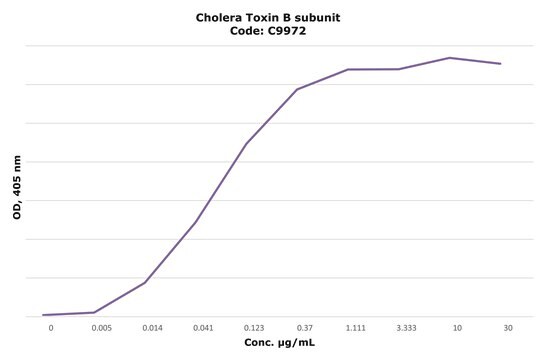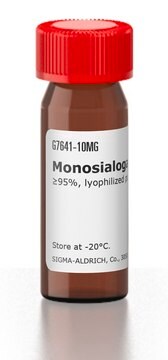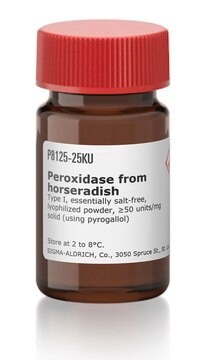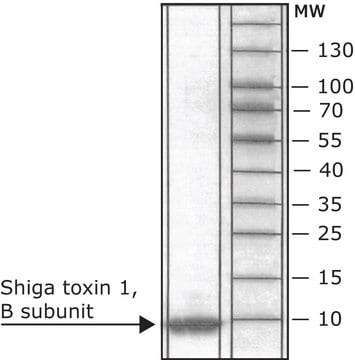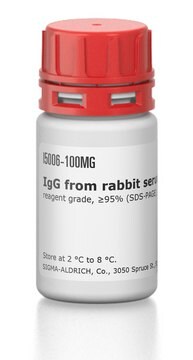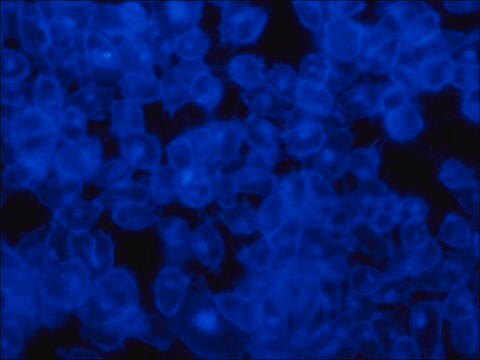C1655
Cholera Toxin B subunit
FITC conjugate, lyophilized powder
Sinónimos:
CTB
About This Item
Productos recomendados
conjugate
FITC conjugate
Quality Level
form
lyophilized powder
mol wt
~12 kDa
composition
Protein, ~20% Lowry
extent of labeling
~1.0 mol FITC per mol protein
storage temp.
2-8°C
SMILES string
CCOc1ccccc1C(=O)Nc2ccc(Cl)c(c2)C(F)(F)F
InChI
1S/C16H13ClF3NO2/c1-2-23-14-6-4-3-5-11(14)15(22)21-10-7-8-13(17)12(9-10)16(18,19)20/h3-9H,2H2,1H3,(H,21,22)
InChI key
YDXZSNHARVUYNM-UHFFFAOYSA-N
¿Está buscando productos similares? Visita Guía de comparación de productos
Application
- to label distal cerebrospinal fluid-contacting neurons (dCSF-CNs) in lateral ventricles of rat
- to stain epididymal sperms of mice
- to stain peritoneal macrophages of mice
Biochem/physiol Actions
Features and Benefits
Physical form
Analysis Note
signalword
Warning
hcodes
Hazard Classifications
Acute Tox. 4 Inhalation - Aquatic Chronic 3
Storage Class
11 - Combustible Solids
wgk_germany
WGK 2
flash_point_f
Not applicable
flash_point_c
Not applicable
Elija entre una de las versiones más recientes:
¿Ya tiene este producto?
Encuentre la documentación para los productos que ha comprado recientemente en la Biblioteca de documentos.
Los clientes también vieron
Contenido relacionado
Cyclic nucleotides, including cyclic AMP (cAMP), cyclic GMP (cGMP) and cyclic ADP-ribose, have been extensively studied as second messengers of intracellular events initiated by activation of GPCRs. cAMP modifies cell function in all eukaryotic cells, principally through the activation of cAMP-dependent protein kinase (PKA), but also through cAMP-gated ion channels and guanine nucleotide exchange factors directly activated by cAMP.
Nuestro equipo de científicos tiene experiencia en todas las áreas de investigación: Ciencias de la vida, Ciencia de los materiales, Síntesis química, Cromatografía, Analítica y muchas otras.
Póngase en contacto con el Servicio técnico